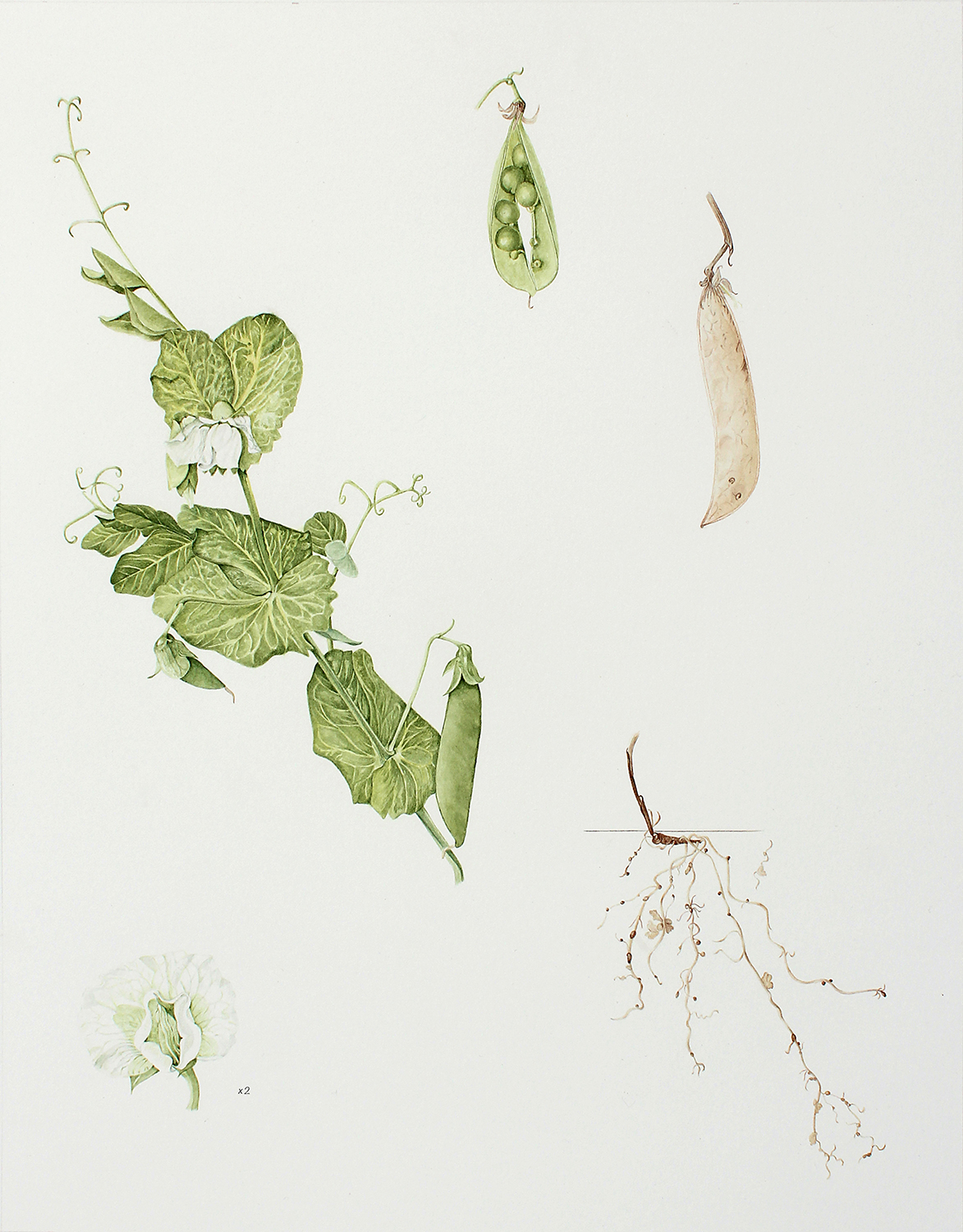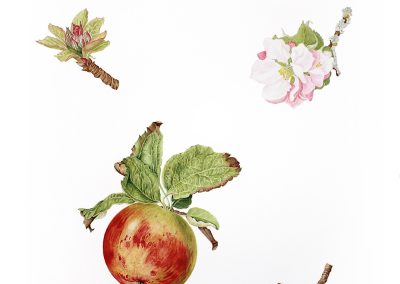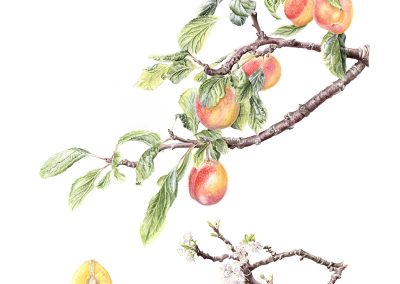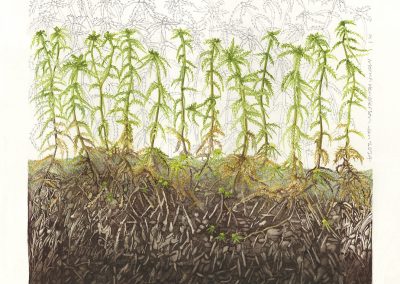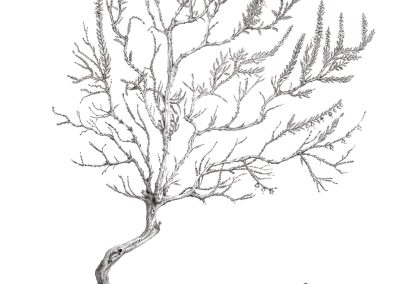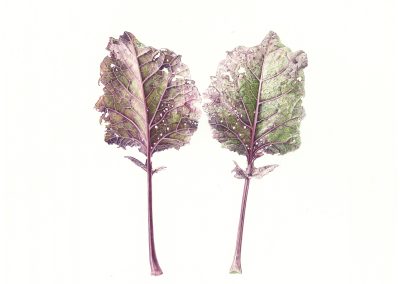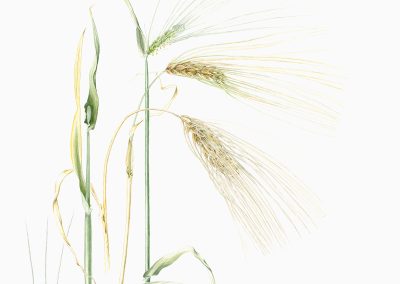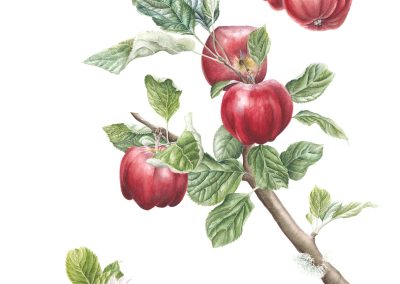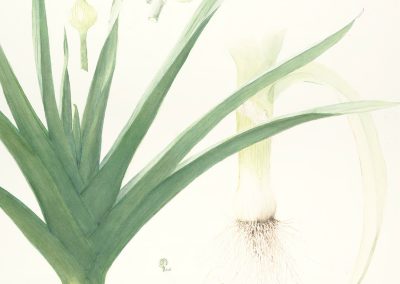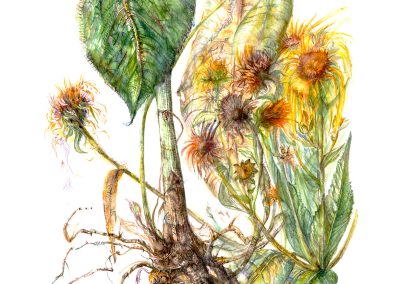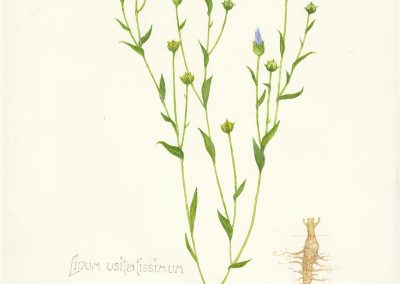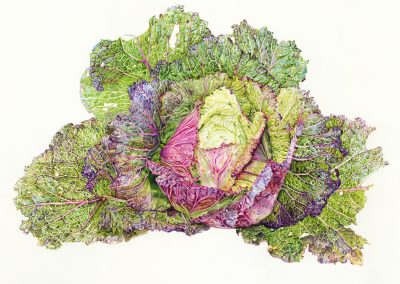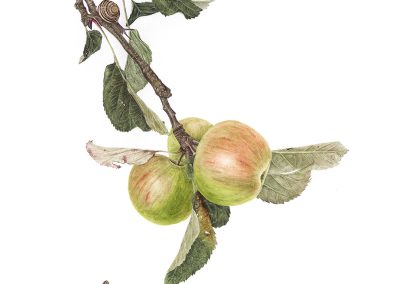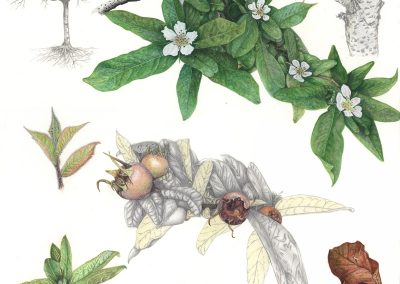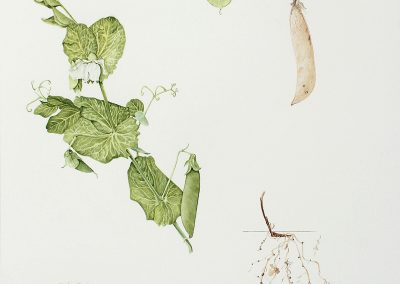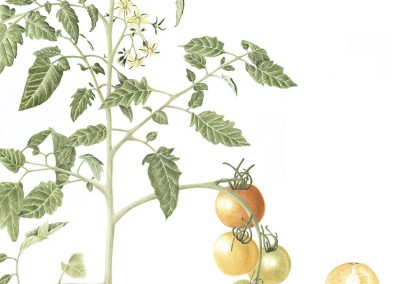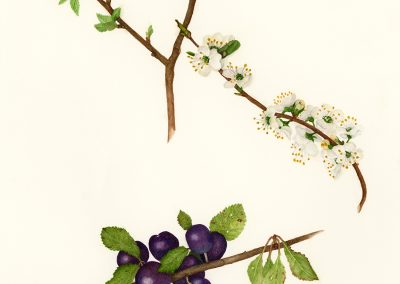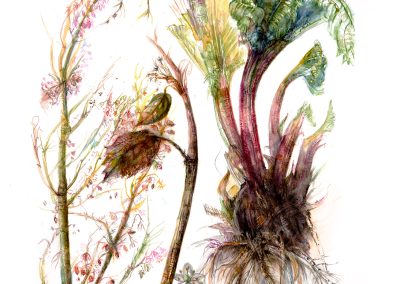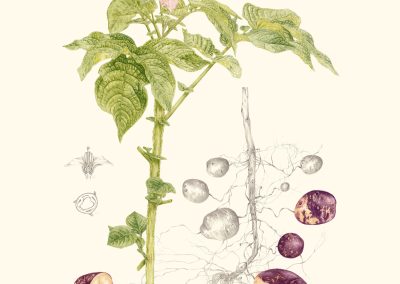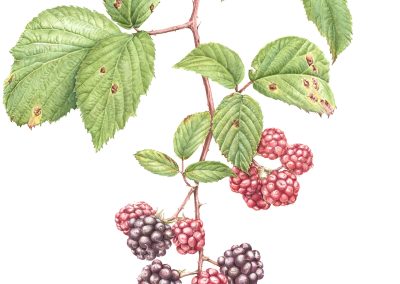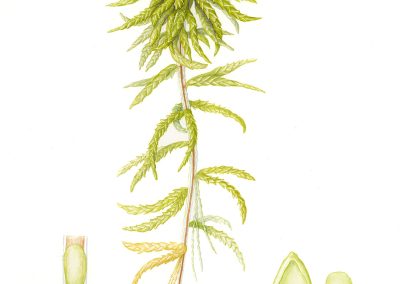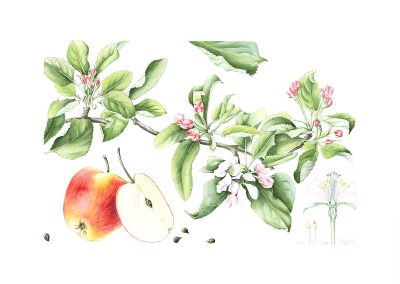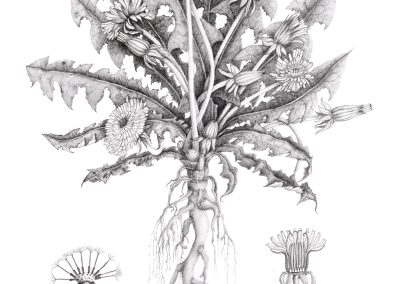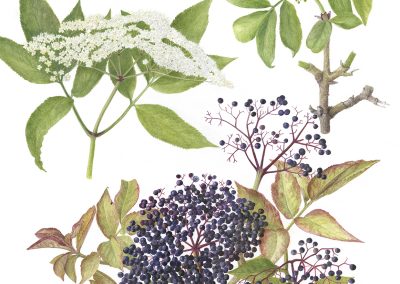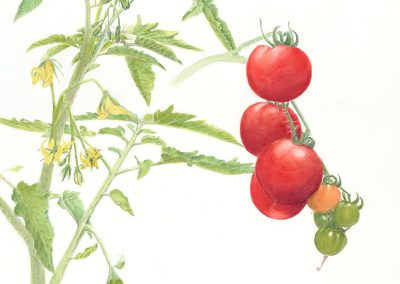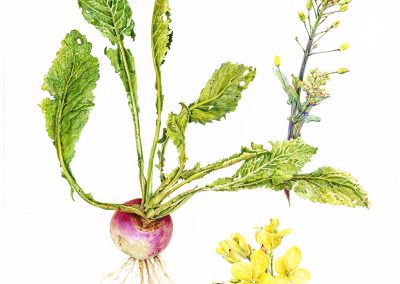Pisum sativum
Pea ‘Gradus’
Anne Carlaw
Watercolour
Artwork size in cm, 46 x 36
£750.00
Peas eaten from the pod, in the garden are delicious. They are rich in protein, fibre, iron, calcium , potassium, manganese , Vitamins C and B6. Gradus is an early maturing pea, about 3 ft in height and has long pods containing 7 to 8 peas. It is a good garden variety.
As legumes, peas form part of the crop rotation cycle which helps to increase yields by improving the nutrients and organic matter in the soil and can help disrupt pest lifecycles. Legumes form a symbiotic relationship with Rhizobium bacteria which form root nodules which fix atmospheric nitrogen making it available to the plant as nitrates. In return the bacteria get sugars from the plant. This means legumes produce their own fertiliser.
In the 1800’s Gregor Mendel’s work with peas led to his Laws of Inheritance. He deduced that genes work in pairs and are inherited as distinct units, one from each parent. From this Meicher identified the DNA molecule and in 1953 Watson and Crick discovered its molecular structure – this paved the way for the modern science of Genetics, all thanks to the pea.
If you would like to purchase a painting, please get in touch with info@botanicascotia.uk
Please note: Paintings will be on display at the V&A Dundee until the end of July, so a pickup after that date can be arranged.
